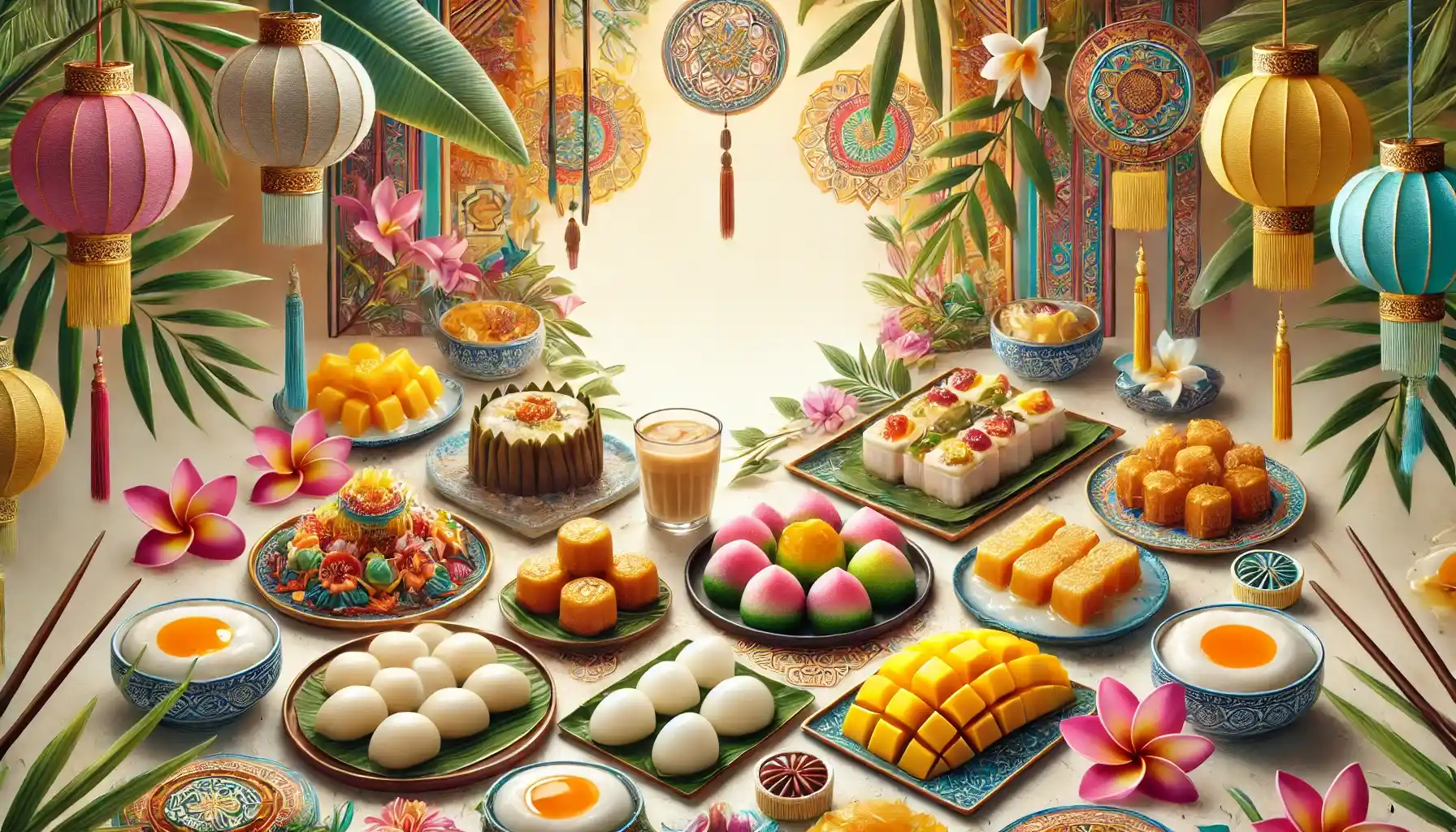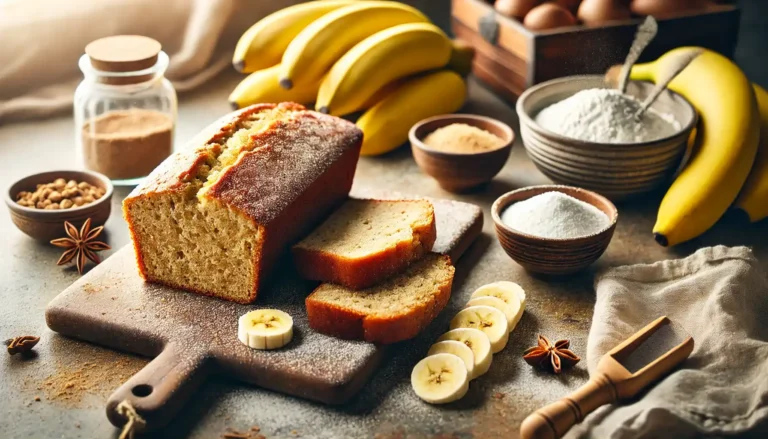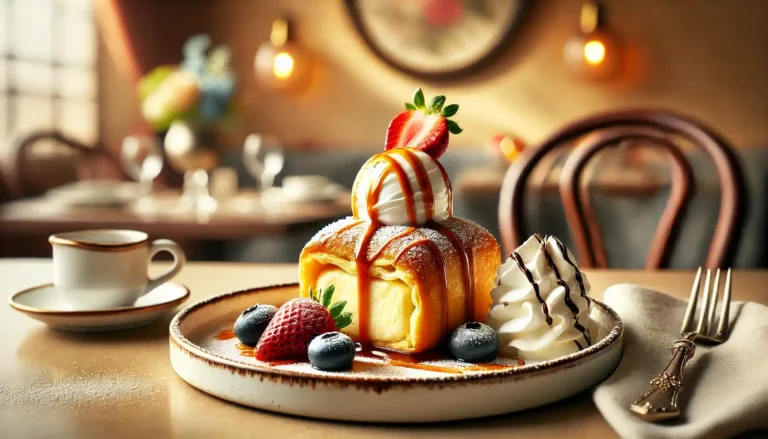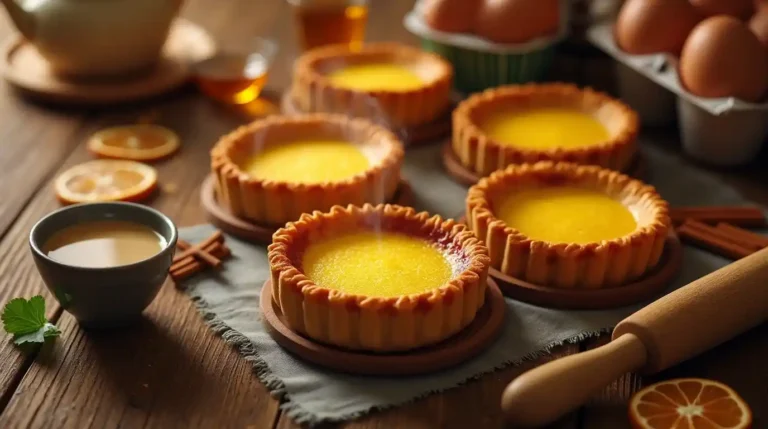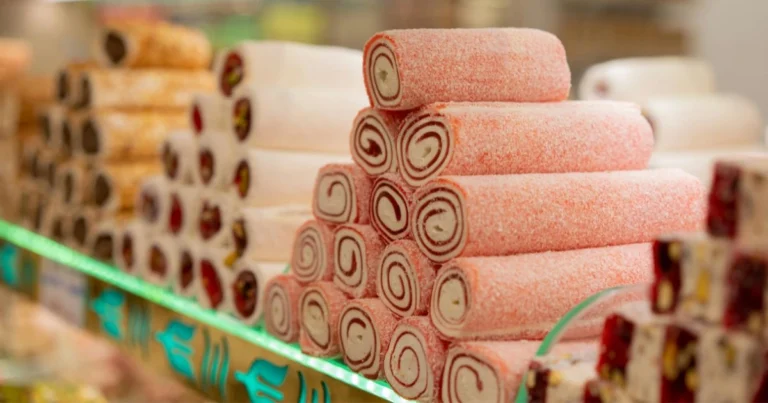Asian Desserts: A Delectable Journey Through Sweet Traditions
Asian desserts boast a mouthwatering variety of textures, ingredients, and flavor profiles. From delicate Japanese wagashi to velvety Indian gulab jamun, each region in Asia has crafted its own unique confections over centuries. In this article, we will explore popular Asian desserts, learn about their fascinating histories, and discover why they have captured hearts across the globe.
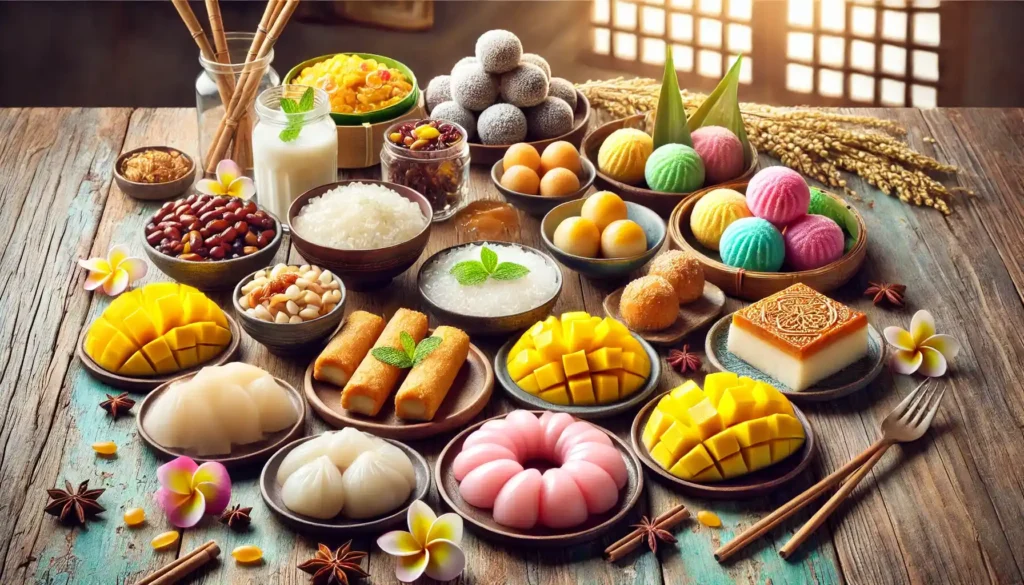
Table of Contents
1. Introduction to Asian Desserts
Asian desserts are renowned for their diversity. Different regions experiment with everything from tropical fruits to beans, sweet rice, and exotic spices. While traditional Asian sweets can be light and delicately flavored (like Japanese mochi), others offer rich, indulgent tastes (like Indian rasmalai).
In recent decades, global food enthusiasts have taken a keen interest in Asian desserts. Various dessert shops now feature exotic sweet treats such as bubble tea, moon cakes, and mango sticky rice, introducing people to Asia’s vibrant culinary tapestry.
2. Exploring East Asian Desserts
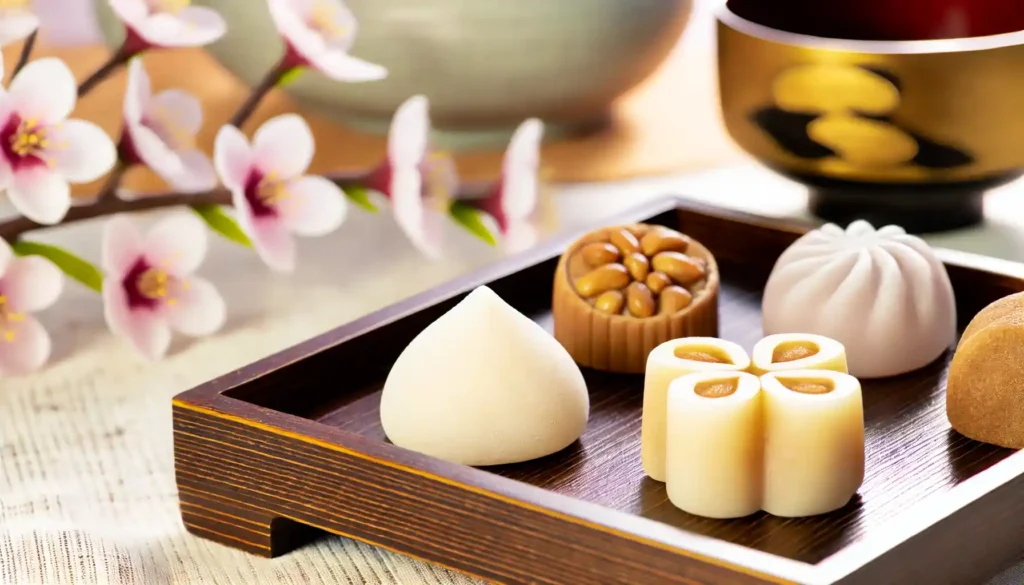
2.1 Japan’s Wagashi
Wagashi are traditional Japanese confections that generally feature sweetened bean paste, rice flour, or sweet potatoes. Their exquisite shapes and designs often draw inspiration from nature, reflecting the seasonality that is central to Japanese cuisine. Common wagashi types include:
- Daifuku: Soft mochi filled with sweet red bean paste (anko) or other fillings like strawberry.
- Dorayaki: Two fluffy pancakes with a sweet bean paste filling in the middle.
- Yokan: A jelly-like dessert made from red bean paste and agar.
Many of these desserts pair perfectly with a cup of green tea, highlighting their subtle yet distinctive flavors.
2.2 Korean Patbingsu
In Korea, patbingsu is a beloved summertime dessert that features shaved ice topped with sweet red beans, condensed milk, and sometimes fruit or rice cakes. It has become a modern dessert phenomenon, with cafés across South Korea competing to offer the most creative renditions of this icy delight.
- Traditional Patbingsu: Includes basic ingredients like sweet red bean paste, tteok (rice cakes), and condensed milk.
- Modern Patbingsu: Can be topped with matcha powder, fresh fruit, yogurt, or cereals for added crunch.
2.3 Chinese Tangyuan and Mooncakes
China is home to a wide range of desserts, but tangyuan and mooncakes are two that hold significant cultural importance.
- Tangyuan: Glutinous rice balls stuffed with sweet black sesame or peanut paste, served in a lightly sweetened soup. They are traditionally eaten during the Lantern Festival as symbols of family unity.
- Mooncakes: Baked pastries with a dense, sweet filling. Common flavors include lotus seed paste, red bean paste, or salted egg yolks. Mooncakes are central to celebrating the Mid-Autumn Festival.
3. Diving into Southeast Asian Sweets
3.1 Thai Mango Sticky Rice
One of the most famous Southeast Asian desserts is Thai mango sticky rice. This dessert combines sweet, fragrant glutinous rice with creamy coconut milk and juicy mango slices. Served warm, it delights taste buds with its satisfying balance of sweetness, richness, and fruitiness.
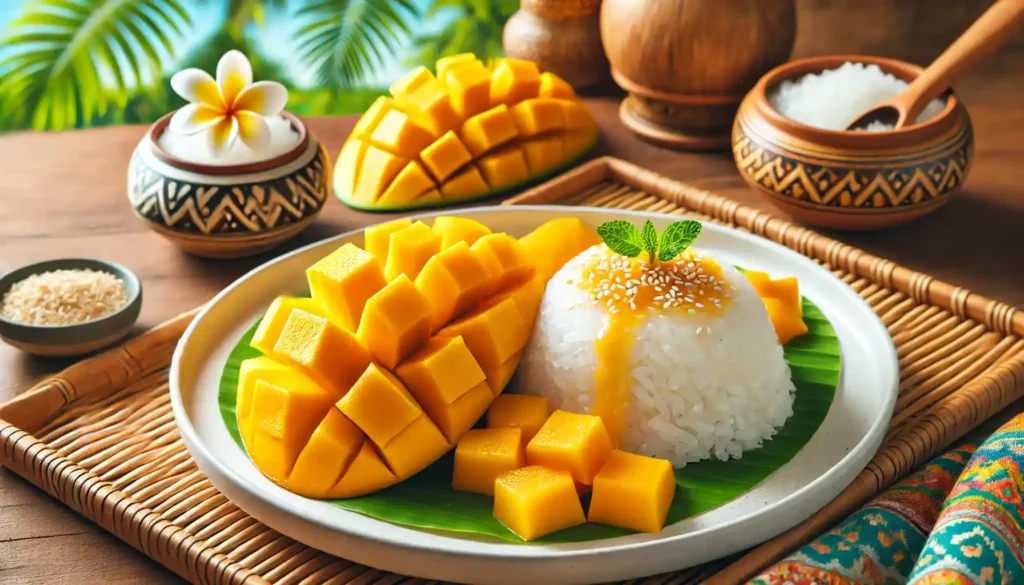
- Key Ingredients: Glutinous rice, coconut cream, sugar, salt, ripe mangoes.
- Variations: Some versions use pandan leaves for a subtle aroma or top the rice with sesame seeds for extra texture.
3.2 Filipino Halo-Halo
A colorful feast for both the eyes and the palate, halo-halo is a quintessential Filipino dessert. Its name, which translates to “mix-mix,” highlights its preparation method: layers of candied fruits, beans, jellies, evaporated milk, and shaved ice all mixed together.

- Common Ingredients: Sweet beans (garbanzo, kidney), sweetened bananas (saba), tapioca pearls, gulaman (jelly), and leche flan.
- Serving Style: Often served in tall glasses with multiple layers, providing a rainbow-like effect.
3.3 Vietnamese Chè
Chè is a family of sweet soups and puddings found in Vietnam. It comes in many varieties, each featuring diverse ingredients such as beans, glutinous rice, tapioca, and fresh fruits.
- Chè Ba Màu (Three-Color Dessert): Combines mung beans, red kidney beans, and green jelly, topped with coconut milk.
- Chè Chuối: A comforting banana and coconut milk pudding with sago pearls.
4. South Asian Confections
4.1 Indian Gulab Jamun
One of the most iconic traditional Asian sweets, gulab jamun is a staple at Indian celebrations. Deep-fried balls made from khoya (milk solids) are soaked in sugar syrup flavored with cardamom, rosewater, or saffron. The result is melt-in-your-mouth sweetness that’s hard to resist.
- Serving Suggestions: Often served warm, sometimes with nuts sprinkled on top.
- Variations: Chocolate gulab jamun and baked gulab jamun offer modern twists.
4.2 Pakistani Kheer
A creamy rice pudding, kheer holds a cherished place in Pakistani and Indian households. It is made by simmering rice with milk and sugar, enhanced by cardamom pods, saffron strands, or almonds.
- Different Types: Vermicelli kheer (seviyan) and tapioca kheer (sabudana) are popular varieties.
- Cultural Significance: Often prepared during religious festivals, weddings, and celebratory occasions.
5. Key Ingredients in Traditional Asian Sweets
Many Asian desserts center around just a handful of core ingredients, yet produce an astounding variety of flavor profiles and textures. Some common components include:
- Glutinous Rice: Known for its sticky texture, perfect for mochi, tangyuan, and sticky rice desserts.
- Beans: Red beans (adzuki), mung beans, and black beans are used in sweet pastes and soups.
- Coconut Milk: Prominent in Southeast Asian desserts, imparting a creamy sweetness.
- Tea: Green tea, matcha, and jasmine tea often infuse subtle aromas into desserts.
- Milk and Dairy: Central to sweets like Indian gulab jamun and kheer.
- Fruits: Mangoes, bananas, durian, and jackfruit are frequently used in tropical desserts.
6. Table: Popular Asian Desserts at a Glance
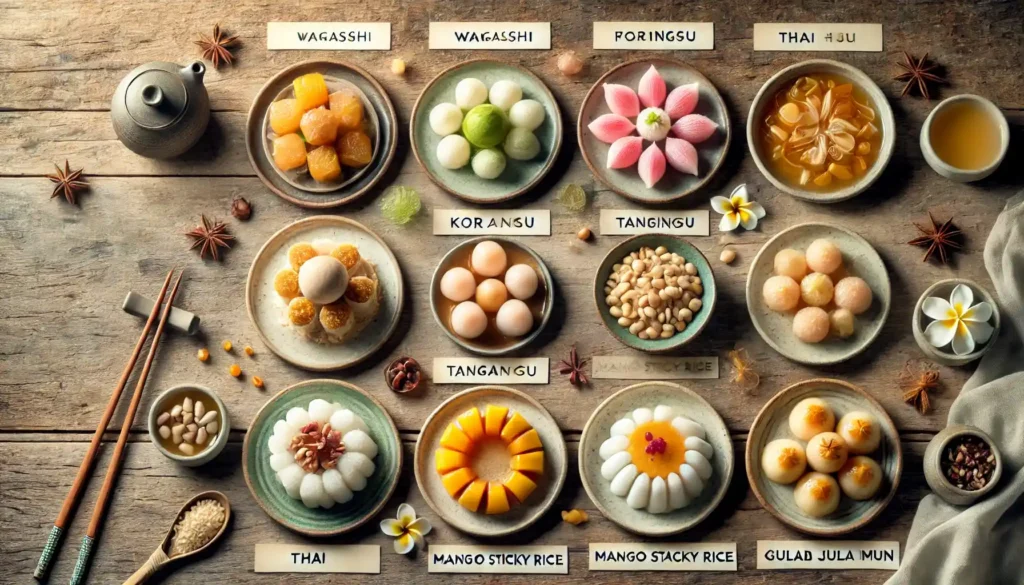
| Dessert | Region | Key Ingredients | Flavor Profile |
|---|---|---|---|
| Wagashi | Japan | Rice flour, bean paste, sweet potatoes | Subtle, delicate |
| Patbingsu | Korea | Shaved ice, red bean paste, condensed milk | Sweet, icy, refreshing |
| Tangyuan | China | Glutinous rice, sesame/peanut paste | Soft, slightly sweet |
| Mooncakes | China | Flour, lotus seed paste, salted egg yolk | Rich, dense, subtly sweet |
| Mango Sticky Rice | Thailand | Glutinous rice, coconut milk, fresh mango | Creamy, fruity, sweet |
| Halo-Halo | Philippines | Sweet beans, jellies, milk, shaved ice | Textured, colorful, sweet |
| Chè | Vietnam | Beans, jellies, coconut milk, fruits | Varied, from mild to sweet |
| Gulab Jamun | India | Khoya (milk solids), sugar syrup, cardamom | Rich, syrupy, aromatic |
| Kheer | Pakistan/India | Rice, milk, sugar, cardamom, saffron | Creamy, sweet, fragrant |
7. Healthier Twists on Asian Desserts
Indulging in Asian desserts doesn’t always mean compromising on nutrition. Many people now seek healthier alternatives by reducing sugar content or using nutrient-dense ingredients. Consider these simple swaps:
- Use Natural Sweeteners
Honey, date syrup, or coconut sugar can lend sweetness without excessive refinement. - Incorporate Fresh Fruits
Boost flavor and nutrition by adding fresh berries, mangoes, or passion fruit to desserts. - Plant-Based Milks
Substitute regular milk with almond, soy, or oat milk for vegan-friendly treats. - Baking Instead of Deep-Frying
Baked versions of classic desserts like gulab jamun lower the oil content.
Small changes can significantly reduce calories and add nutritional value, ensuring guilt-free enjoyment of your favorite best Asian desserts.
8. Where to Find Authentic Asian Desserts
Asian grocery stores and specialized cafés have become more common worldwide. In many major cities, you can find:
- Korean bakeries serving patbingsu and taiyaki (fish-shaped pastries).
- Bubble tea cafés offering bubble waffles, shaved ice, and sweet taro pastries.
- International dessert shops showcasing mochi donuts, filled buns, and other fusion creations.
For a more in-depth discovery, consider browsing reputable online resources. One trustworthy source is TasteAtlas, which provides insights into local dishes, desserts, and the best places to find them around the globe.
9. Conclusion
The world of Asian desserts is as diverse and vibrant as the continent itself. Each sweet treat reflects a rich history, intertwined with cultural values and regional traditions. From the delicate art of Japanese wagashi to the indulgent syrup-drenched gulab jamun, these desserts inspire countless sweet moments shared among families and friends.
By learning about traditional Asian sweets and experimenting with healthier ingredient swaps, dessert lovers around the globe can appreciate the many flavors that Asia’s culinary heritage has to offer. Whether you are savoring mooncakes during Mid-Autumn Festival or crafting your own twist on classic mango sticky rice, you are part of a delicious journey that transcends borders and cultures.
Embrace the variety, explore new tastes, and let Asian desserts bring a sweet slice of cultural tradition into your home.

